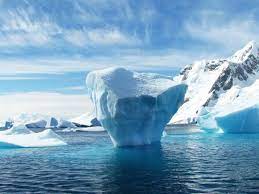Antarctica’s sea ice is experiencing a concerning decline, with record-breaking lows observed over the past two seasons. This decline extends below historical winter maximum levels since satellite monitoring began in the late 1970s.
The summer minimum of sea ice has also been diminishing, with three record-low summers in the past seven years. Scientists are considering whether this could signal a significant shift in Antarctic sea ice patterns, which could have far-reaching consequences for Earth’s climate.
Antarctic sea ice plays a crucial role in regulating the planet’s temperature by reflecting solar energy back into the atmosphere and insulating the ocean. Additionally, it generates cold, salty water masses that influence global ocean currents. However, accurately predicting the annual freeze-thaw cycle of Antarctic sea ice has been a challenge for climate models.
Satellite records since the 1970s have tracked “sea ice extent,” which is the total surface area with at least 15% sea ice coverage. In September, it reached a record low for this time of year. The previous year, although it made a late rally, it remained below the historical median. This minor decrease had significant consequences, leading to devastating effects on Emperor penguins in specific breeding sites.
Antarctic sea ice trends have defied expectations. While global climate models predicted a consistent decrease in sea ice extent, the observations have shown a small increase from 2007 to 2016, followed by a decrease. This discrepancy highlights the challenge of accurately simulating Antarctic sea ice in climate models, which are crucial for forecasting future climate changes. Numerous factors have been proposed as explanations for this discrepancy, including changes in wind and wave patterns, natural variability, stratospheric ozone, and meltwater from the Antarctic ice sheet entering the Southern Ocean. However, none of these factors have provided a definitive answer. To better understand and predict changes in Antarctic sea ice, improved modeling capabilities and more comprehensive measurements of crucial factors are essential. These anomalies in sea ice extent and thickness could be early indicators of the broader impact of climate change on Antarctic sea ice, and further research is necessary to address these complex dynamics.

















